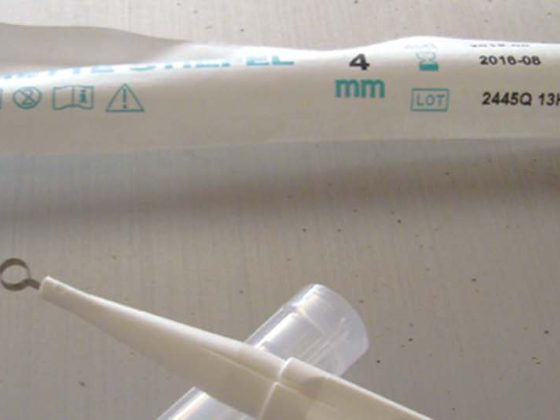The Hot Line Sessions are traditionally the best-attended sessions at the ESC Congress, as they present new results of practice-relevant and potentially practice-changing studies from the entire field of cardiology research. Again this year, there were some exciting results, particularly in the area of heart failure.
Initially, of course, the astonishing results of the ODYSSEY program testing the new PCSK9 inhibitors attracted attention. They are discussed elsewhere in this issue (Prevention Summit Congressional Report, p. 22). But beyond that, what studies were eagerly awaited? The following is a selection.
PARADIGM HF: Breakthrough in heart failure therapy?
The largest study to date in the field of heart failure therapy already made headlines in the spring: It was stopped on the advice of an independent committee. This was due to the “overwhelming benefit” of LCZ696 over enalapril, an ACE inhibitor. Randomized were 8399 patients with NYHA class II-IV and an ejection fraction equal to or less than 40%. They received either LCZ696 (200 mg twice daily, n=4187) or enalapril (10 mg twice daily, n=4212) in addition to previous best therapy. LCZ696 is an angiotensin receptor neprilysin inhibitor (ARNI). It has a unique mechanism of action and apparently reduces the load on the failing heart.
The researchers set out to prove that therapy without ACE inhibitors is possible and effective – as the current data demonstrate with outstanding success: compared to enalapril, LCZ696 highly significantly reduced the risk of death from cardiovascular causes by 20% (13.3 vs. 16.5%) and the risk of hospitalization for heart failure by 21% (12.8 vs. 15.6%). All-cause mortality risk (secondary endpoint) was significantly reduced by 16% with LCZ696 compared with enalapril (17.0 vs. 19.8%).
For the primary endpoint, a composite of cardiovascular-related deaths and heart failure hospitalizations, there was a 20% risk reduction (21.8 vs. 26.5%, p=0.0000002).
There were no relevant safety concerns under the new agent: although patients under LCZ696 had significantly more symptomatic hypotension, this very rarely required discontinuation of therapy. On the contrary, even fewer patients in the LCZ696 group stopped treatment due to side effects than in the enalapril group (10.7 vs. 12.3%, p=0.03). Also, severe angioedema, which had been observed with a related agent, did not cluster.
Based on the impressive results, the authors emphasize the relevance of the study: In contrast to other studies, LCZ696 was not compared with placebo, but with the gold standard ACE inhibitor at the gold standard dose, i.e. with a previously undisputed cornerstone of standard therapy. Approval in the U.S. and Europe is therefore only a matter of time, especially since LCZ696 has been granted fast-track status by the FDA. The study has just been published in the New England Journal of Medicine [1].
CONFIRM-HF: Intravenous iron substitution brings benefit
CONFIRM-HF was designed to answer the extent to which heart failure patients with confirmed iron deficiency symptomatically benefit from 52 weeks of intravenous iron supplementation (n=152). The intravenously applied iron was an iron carboxymaltose (FCM) solution. Another 152 patients received a saline solution (placebo).
The researchers were particularly interested in the long-term efficacy and safety of iron supplementation. Iron deficiency is a very common comorbidity in heart failure and shows associations with impaired functional capacity, poor quality of life, and increased mortality-regardless of the presence of anemia. Overall, a median total dose of 1500 mg of iron was given throughout the study period. More than 75% of patients required a maximum of two injections to maintain stable iron parameters.
Compared with the placebo group, patients on iron supplementation completed 36 additional meters in the six-minute walk test at week 52 (p<0.001). In the primary endpoint (walking test distance after 24 weeks), the verum group already achieved a benefit of 33 meters compared to placebo (p=0.002). The benefit extended across all subgroups (patients with or without anemia). Under iron supplementation, other significant improvements in other measures of functional status and quality of life were also noted. In addition, substitution was associated with significantly fewer hospitalizations due to worsening heart failure (risk reduction of -61%). However, the number of deaths was the same in both groups, which, according to the study leaders, could be attributed to the excessively short follow-up time.
It should be noted that such stable and clinically meaningful improvement in the walking test was last seen only with cardiac resynchronization therapy, the researchers said. Overall, they advocate for greater integration of iron substitution in the upcoming 2016 ESC guidelines. The publication of the study can be found in the European Heart Journal [2].
SIGNIFY: EMA review of ivabradine
In this large-scale study, 19 102 patients with stable coronary artery disease (without clinical heart failure) and a heart rate of at least 70 beats/minute were studied. They received ivabradine as an adjunct to standard therapy for frequency reduction.
This combination was shown to have no effect in patients with stable coronary artery disease (primary end point was combined cardiovascular events consisting of death and myocardial infarction). The combination should be used very cautiously in patients with severe forms of angina. This subgroup, which accounted for more than half of all patients at approximately 12 000, showed significantly worse outcomes. A completely unexpected result that caused a big surprise and much discussion at the ESC Congress.
Furthermore, over an average of almost 28 months, 6.8% of ivabradine patients and 6.4% in the placebo group met the primary endpoint (p=0.20) – this despite concomitant reductions in heart rate. In a way, this can also be seen as a paradigm shift of the previous heart rate hypothesis (“slow down the heart – defeat the disease”). At the very least, the excessive frequency reduction must be doubted. The dosage certainly plays a role here as well.
Due to the ongoing review of the study (or ivabradine approval status) by the EMA, the study investigators did not attend the official ESC press conference. This was justified by the slight but significant increase in risk with ivabradine in the primary end point of the subgroup with symptomatic angina (CCS class II-IV). The study can be found in the New England Journal of Medicine [3].
NECTAR-HF: Vagus nerve stimulation does nothing
This study focused on a new therapy for heart failure: implanted right vagus nerve stimulation (VNS). In heart failure patients, the vagus nerve is said to be insufficiently active. The study included 96 heart failure patients on optimal drug therapy from 24 Western European centers. Six months of VNS treatment was tested, compared with placebo (non-active implant). Two device components were implanted in all patients: The stimulator was implanted on the neck next to the right vagus nerve and the pulse generator under the chest skin. The verum group received a single dose at a mean strength of 1.24 mA.
No relevant differences were found between the two groups in either the primary end point (change in LVESD index, left ventricular end-systolic diameter at six months) or in secondary echocardiographic end points, exercise capacity, or serum biomarkers. Only in three parameters related to quality of life significant differences in favor of VNS therapy could be measured (sometimes in the SF-36 questionnaire). According to the study director, however, these differences must also be interpreted with caution, as blinding was very difficult due to the nature of the therapy (patients may have felt the pulse, especially at higher doses).
The lack of primary success of this therapy surprised the study investigators: After all, preclinical data do show a stable benefit of VNS. At least the treatment was relatively safe: infections occurred in 7.4% of patients, which is comparable to rates in patients with epilepsy in whom VNS is already used successfully.
Failure of therapy in heart failure could be attributed to three possible causes:
- The optimal dosage of stimulation is largely unknown (in this study, it was 1.24-1.42 mA).
- Patients in NECTAR-HF were already on relatively well-controlled drug therapy, which may have attenuated the benefit of VNS.
- The study period may have been too short at six months to see changes in cardiac function.
This study was also published in the European Heart Journal [4].
Source: ESC Congress, August 30 – September 3, 2014, Barcelona
Literature:
- McMurray JJV, et al: Angiotensin-neprilysin inhibition versus enalapril in heart failure. N Engl J Med 2014; 371: 993-1004.
- Ponikowski P, et al: Beneficial effects of long-term intravenous iron therapy with ferric carboxymaltose in patients with symptomatic heart failure and iron deficiency. Eur Heart J 2014; August 31. doi: 10.1093/eurheartj/ehu385 [Epub ahead of print].
- Fox K, et al: Ivabradine in Stable Coronary Artery Disease without Clinical Heart Failure. N Engl J Med 2014; 371: 1091-1099.
- Zannad F, et al: Chronic vagal stimulation for the treatment of low ejection fraction heart failure: results of the neural cardiac therapy for heart failure (NECTAR-HF) randomized controlled trial. Eur Heart J 2014; August 31. doi: 10.1093/eurheartj/ehu345 [Epub ahead of print].
CARDIOVASC 2014; 13(5): 32-34











